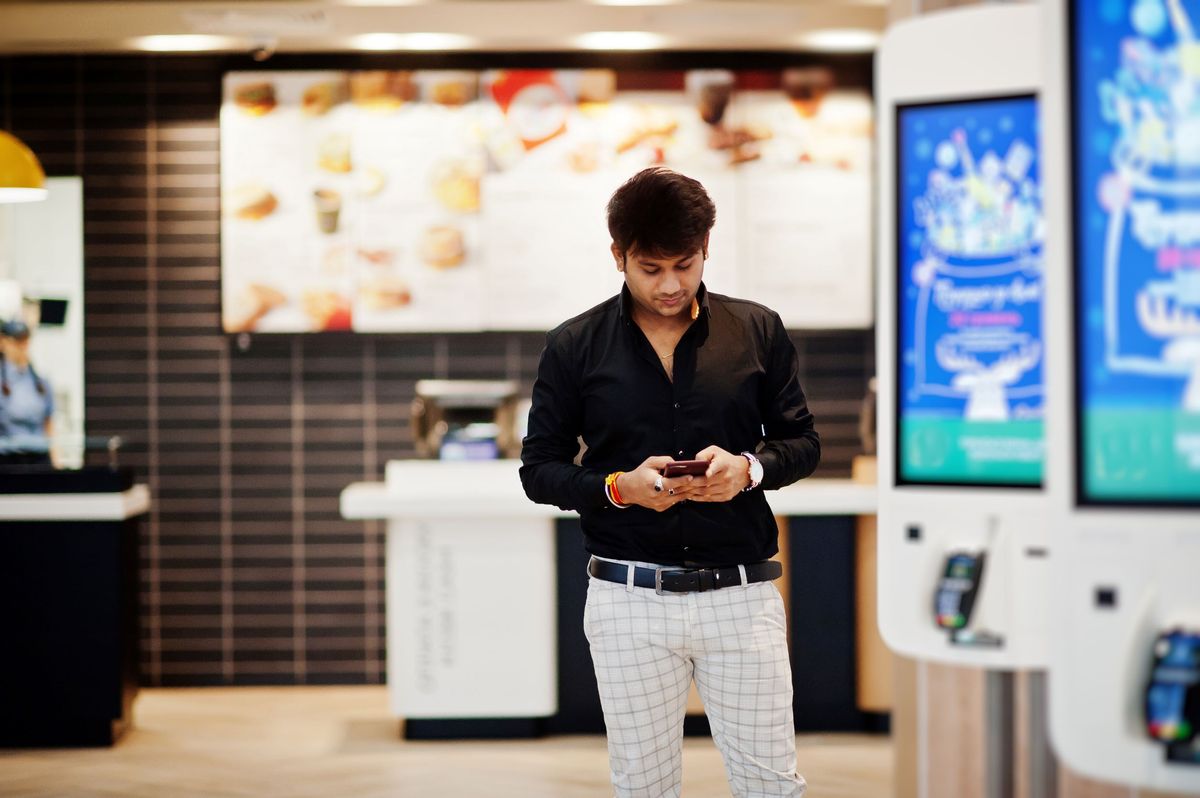The labor shortage that drastically impacted nearly every restaurant in 2021 is starting to ease up, but the National Restaurant Association reports that three in four operators say recruitment is still difficult. As more diners venture out, staffing shortages are slowing down the ordering process and leaving a bad taste in the mouths of guests looking for a quick bite to eat. For small and mid-size restaurants, solutions like QR ordering and handheld POS devices are affordable and effective tools to combat labor shortages while creating a great guest experience. Meanwhile, high-volume restaurants are increasingly turning to self-service kiosks as a solution to increase throughput in the face of rising labor costs.
What can self-ordering kiosks do?
Self-service kiosks for restaurants are guest-facing, freestanding machines where guests can put in orders. This technology also allows for QR codes on menus and apps that customers can use to order on their own devices.
These ordering methods allow enterprise restaurant operators to concentrate on delivering quality food and service, keeping lines down, and lowering employee stress levels. Reallocating labor from the ordering process affords operators the opportunity to increase staff productivity while cutting labor costs.
Without the human element of miscommunication, guest order accuracy can increase. Self-ordering kiosks also improve transfer errors when servers with several tables on their minds are able to enter orders into an enterprise-grade point of sale (POS) system.
Give guests what they want (and more).
Consistency in restaurant operations is one of the most critical points of service. A computer is able to offer a higher level of consistency with repetitive tasks like communicating orders to the kitchen, leading to happy managers and, more importantly, satisfied guests.
The number of guests opting for self-ordering kiosks has steadily increased over the last few years—upwards of 80%, according to PYMNTS. A lack of extra time to wait in line or to chat with the cashier along with a truly convenient, personalized shopping experience is pushing more diners to opt for tech ordering solutions. Tillster reports that when a cashier line gets up to more than five people, 75% of guests would prefer to use a kiosk. That percentage increases dramatically when lines are even longer.
Increased check averages and loyalty.
Self-service kiosks for restaurants ironically provide an opportunity for operators to get more personal with guests. Automated ordering allows restaurants to preprogram options to upsell based on individual guests' likes and dislikes. National Restaurant News reports that one San Francisco-based chain saw an average check increase of 12% after adopting better self-ordering technology.
Giving guests a no-pressure option to upgrade to a specialty beverage or add a dessert may be more successful than having a team member attempt to upsell. Guests often feel more comfortable and in control making these choices for themselves. The ability to include high-resolution images of food (and more specials than any cashier could possibly rattle off) is another great reason to move in the direction of self-service kiosks.
Last but certainly not least, kiosk usage makes building a loyalty program even easier. Kiosks can save data for each individual guest, making ordering more customized with each visit and faster with the option to simply select a past order to enjoy again.
Contactless dining is the future.
From quick service to family dining and from independent restaurants to large venues, kiosks provide opportunities for a wide range of high-volume operators. The Honda Center in Anaheim, CA, for example, moved to kiosks for the 2021-2022 National Hockey League season, increasing profitability and allowing guests to return to their seats more quickly.
Ultimately, a self-ordering kiosk signals to your guests that you respect their time. Along with the ability to confidently customize orders, easily implement a loyalty program, and increase sales, there's no shortage of reasons to invest in self-ordering technology for your restaurant's future.














